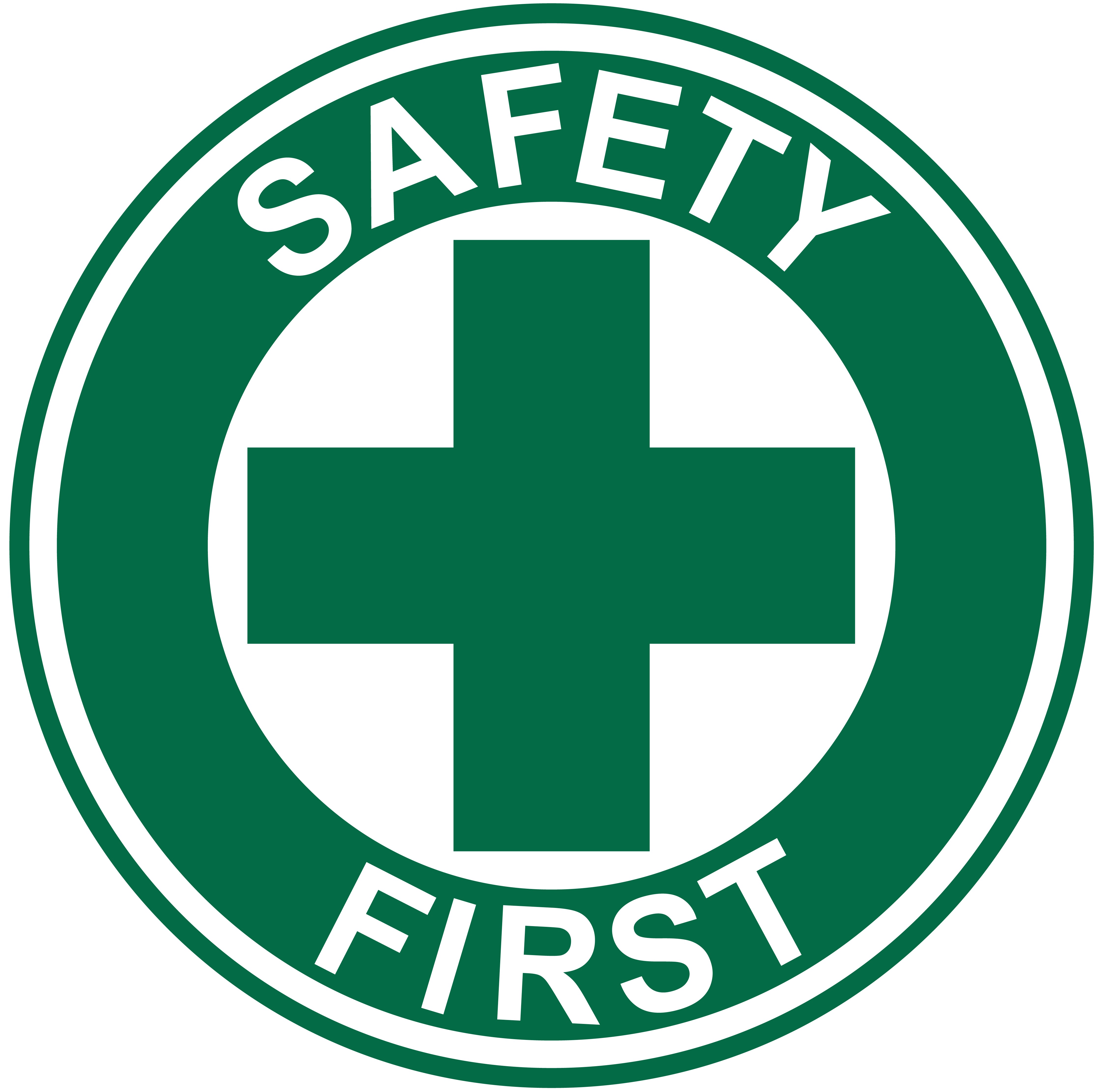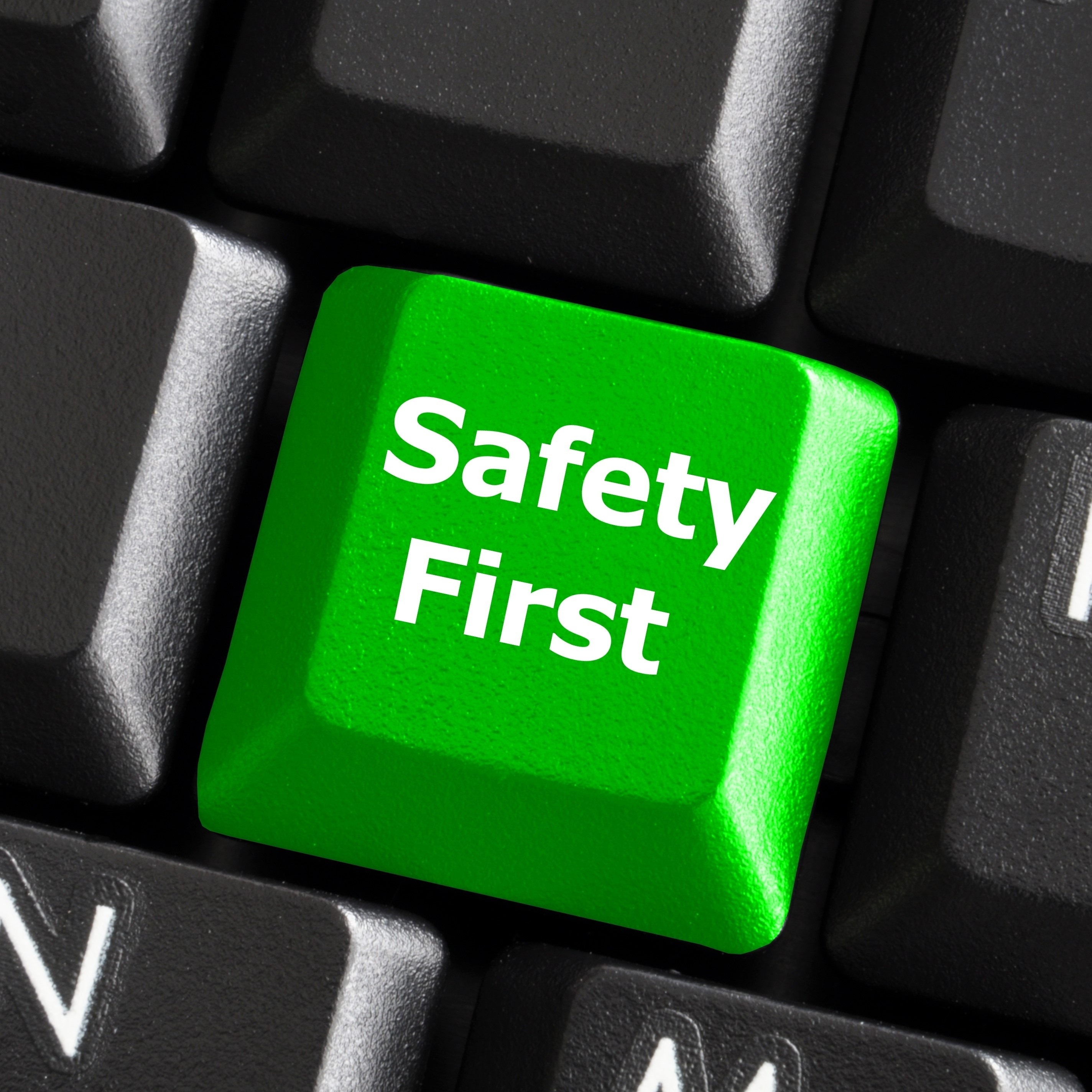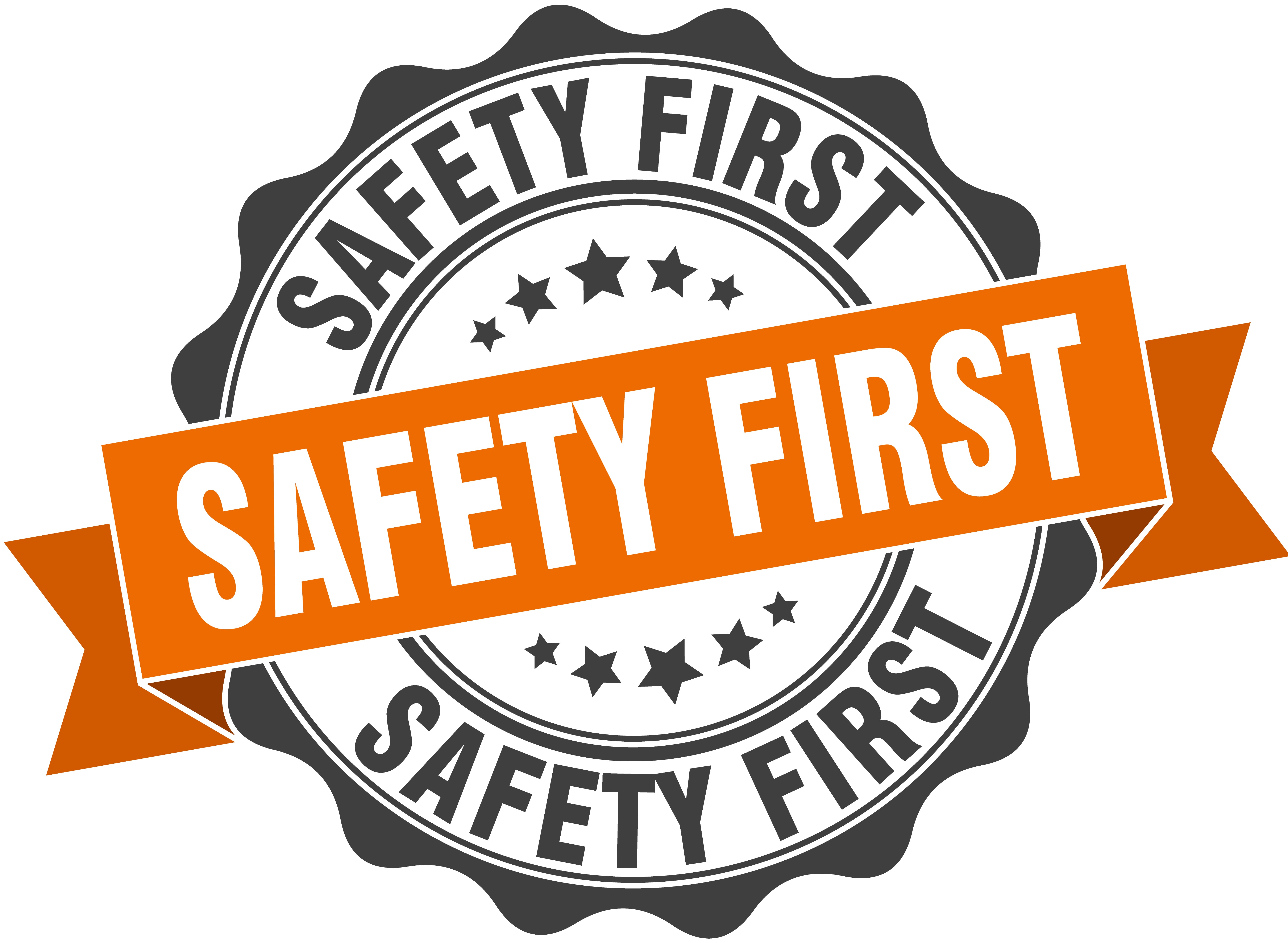Title Page
-
Site conducted
-
Conducted on
-
Prepared by
EMS ASPECTS CHECKLIST
-
INSTRUCTIONS
1. Answer "Yes", "No", "?" or "n/a on the questions below.
2. Add photos and notes by clicking on the paperclip icon
3. To add a Corrective Measure click on the paperclip icon then "Add Action", provide a description, assign to a member, set priority and due date
4. Complete audit by providing digital signature
5. Share your report by exporting as PDF, Word, Excel or Web Link
STATUS OF PREVIOUS AUDIT FINDINGS
-
Have Non-Conformities and Corrective Actions from the last audit been reviewed?
-
Are Corrective Actions effective for the previous non-conformities raised at the last audit?
-
Explain:
GENERAL
OPERATIONAL CONTROL
-
When was the last Industrial Hygiene Survey?
-
Has any NEW equipment, technology, production processes, chemicals, materials and/or activities been added since the last Internal Audit?
-
Was the new equipment, technology, production processes, chemicals, materials and/or activities submitted to Corporate EHS for review and evaluation?
-
Did Corporate EHS add new equipment, technology, production processes, and/or activities to Process Aspect & Impacts Risk Analysis-IFF1.0-02-6.1.2 and evaluate Environmental Aspects & Impacts?
-
Is the previous Industrial Hygiene Survey still valid?
-
Have there been any CHANGES in equipment, technology, processes, and/or activities since the last Internal Audit?
-
Were these changes submitted to Corporate EHS for review and evaluation?
-
Did Corporate EHS add changes to Process Aspect & Impacts Risk Analysis-IFF1.0-02-6.1.2 and evaluate Environmental Aspects & Impacts?
-
Is the previous Industrial Hygiene Survey still valid?
HOUSEKEEPING - EXTERIOR
-
1. Facility grounds are free of general trash or other inappropriate debris.
- Good
- Fair
- Poor
- N/A
-
Specify Area
-
2. Cigarette butt cans are being used and ground is free of butts.
-
Specify Area
-
3. Areas around exits are free from materials, garbage and debris.
-
Specify Area
-
4. Areas around bay doors are free from materials, garbage and debris.
-
Specify Area
-
5. Area around waste water tank is free from materials, garbage and debris.
-
Specify Area
-
6. Items and materials stored outside are neat and orderly.
-
Specify Area
-
7. If items are being stored outside are they organized and in a manner that will prevent personal harm?
-
Specify Area
-
8. Facility storage areas are free of unusable materials and other debris.
-
Specify Area
HOUSEKEEPING - INTERIOR
-
1. Plant-work areas and floors are orderly and clean (free of trash & debris).
-
Specify Work Area/Station
-
2. Trash bins are emptied regularly.
-
Specify Work Area/Station
-
3. Employees are addressing cleanliness issues as they see them?
-
Specify Work Area/Station
AREA CONTROL
-
1. Only work essentials are in the area to complete the job? (personal items are kept to a bare minimum)
-
Specify Work Area/Station
-
2. Are there excess supplies and equipment present?
-
Specify Work Area/Station
-
3. Are work areas cluttered ( this includes carts, tables and scrap bins in work areas )?
-
Specify Work Area/Station
-
4. Safe access/egress from work area
-
Specify Work Area/Station
-
5. Are electrical panels and circuit breakers free from obstructions?
-
Specify Work Area/Station
-
6. Are shelves organized (boxes closed, one box open at a time, no trash present)?
-
Specify Work Area/Station
-
7. Are extension cords being used as permanent powers sources?
-
Specify Work Area/Station
-
8. Are aisles, exits and fire extinguishers easily accessible and free of obstructions?
-
Specify Work Area/Station
-
9. Slip/Trip/Fall hazards controlled
-
Specify Work Area/Station
-
10. Are pallets and materials laying flat and stacked securely and neatly?
-
Specify Work Area/Station
-
11. Are pallets that are in use in good condition?
-
Specify Work Area/Station
Emergency Planning and Community Right to Know (EPCRA)
-
1. Tier II assessment completed for existing/new chemicals
-
2. Tier II submitted by deadline
-
3. Tier II Report Records available for Previous 5 years or since start of operations.
Toxic Release Inventory (TRI) Reporting
-
1. Annual usage of TRI chemicals assessed
-
2. TRI report submitted by July 1st deadline, records available for previous 5 years or since start of operations
-
3. Pollution Prevention Plan reviewed and summary submitted annually
-
4. Pollution Prevention Progress Report submitted by July 1st deadline
Resource Conservation and Recovery Act (RCRA)
GENERAL WASTE
-
1. Is there any trash on the ground around containers?
-
Specify Work Area/Station
-
2. Are there any stains or residue on the ground that may indicate the container is leaking?
-
Specify Work Area/Station
-
3. Are containers in good physical condition (no excessive rust, holes, etc.)?
-
Specify Work Area/Station
WASTE MANAGEMENT
-
1. Waste profiles and reporting current?
-
2. Employee training current and documented?
-
3. Waste properly disposed?
-
4. "2 signature" and "3 signature" copies of each manifest available, if using manifest?
-
5. Shipping manifests or other shipping documentation available for at least 3 years?
WASTE STORAGE AREA(S)
-
1. Spill kit accessible
-
Specify Work Area/Station
-
2. Spill kit contains absorbents
-
Specify Work Area/Station
-
3. Spill kit contains PPE
-
Specify Work Area/Station
-
4. Fire Extinguisher accessible
-
Specify Work Area/Station
-
5. Fire extinguishers inspected and maintained as required
-
Specify Work Area/Station
-
6. Employee readily available or within short distance to respond to emergency situation
-
7. Emergency response phone posting at storage areas
-
Specify Work Area/Station
-
8. Waste storage area labeled
-
Specify work station(s)
-
9. Waste stored on impervious surface with 100% containment
-
Specify work station(s)
-
10. Incompatible wastes are adequately separated
-
Specify work station(s)
-
11. Storage areas free of spills and/or leaks
-
Specify work station(s)
-
12. Aisle spacing sufficient
-
Specify work station(s)
-
13. Accumulation amount within generator quantity
WASTE CONTAINER MANAGEMENT & INSPECTION
-
1. Containers (drums, boxes, pails) closed and/ or funnel lids latched
-
Specify work station(s)
-
2. Containers labeled with the words "Hazardous Waste"
-
Specify work station(s)
-
3. Container label clearly indicates contents
-
Specify work station(s)
-
4. Containers labeled with accumulation start dates
-
Specify work station(s)
-
5. Container tops free of spillage & debris
-
Specify work station(s)
-
6. Containers are compatible with wastes stored
-
Specify work station(s)
-
7. Containers are in good condition
-
Specify work station(s)
-
8. Flammable waste containers properly grounded and bonded
-
Specify work station(s)
-
9. Inspection records available for at least 3 years
SATELLITE ACCUMULATION
-
1. Satellite Accumulation areas do not exceed 55 gallons of storage
-
2. Satellite containers stored at point of waste generation
-
3. Satellite accumulation containers dated correctly
-
4. Spill kit accessible and stocked
AEROSOL CAN DISPOSAL
-
1. Is the lever and containment cover in good working condition?
-
Specify work station(s)
-
2. Are aerosol cans punctured and emptied before disposal?
-
Specify Work Area/Station
-
3. Are aerosol cans placed in proper disposal bins after cans are punctured and emptied?
-
Specify Work Area/Station
-
4. Is a Hazardous Waste Label with accumulation start date present on drum?
-
Specify work station(s)
-
5. Waste shipped offsite within 1 year of accumulation start date?
-
6. Shipping manifests or other shipping documentation available for at least 3 years
UNIVERSAL WASTE
Battery Disposal
-
1. Adequate signage to indicate location of disposal?
-
2. Are batteries (lead acid, rechargeable) properly stored?
-
3. Are waste batteries stored in closed container(s)?
-
4. Are containers in good physical condition?
-
5. Is lid secured to the container(s)?
-
6. Is the handle working properly?
-
7. Are waste batteries packaged so terminals will not come in contact with each other? (positive ends taped (Scotch) to prevent fire)
-
8. Is waste batteries container(s) labeled with a Universal Waste Label?
-
Accumulation start date indicated on the label?
-
Waste batteries shipped offsite within 1 year of accumulation start date?
-
9. Waste battery shipping documentation available for at least 3 years?
-
10. Waste batteries recycled?
-
11. Are spill kit(s) accessible and stocked appropriately for waste batteries storage?
Waste Lamps / Fluorescent Light Bulbs
-
1. Adequate signage present to indicate location of disposal?
-
2. Are broken lamps stored separately in sealed container labeled with contents?
-
3. Is container kept closed unless lamps are being added or removed?
-
4. Are containers in good physical condition
-
5. Is waste lamp(s) container labeled with a Universal Waste Label?
-
Accumulation start date indicated on the label?
-
Are waste lamps shipped offsite within 1 year of accumulation start date?
-
6. Waste lamp shipping documentation available for at least 3 years?
-
7. Waste lamps recycled?
-
8. Are spill kit(s) accessible and stocked appropriately for waste lamp storage?
E-waste
-
1. Best Management Practices sufficient for current outdoor storage
-
2. Employee training current and documented
-
3. Waste properly disposed
-
4. "2 signature" and "3 signature" copies of each manifest available, if using manifest
-
5. Shipping manifests or other shipping documentation available for at least 3 years
USED OIL
-
1. Are used oil containers are in good condition?
-
Specify Work Area/Station
-
2. Are oil containers closed and/or funnel lids are attached unless oil is being added or removed?
-
Specify Work Area/Station
-
3. Are used oil containers labeled as "Used Oil"
-
Specify Work Area/Station
-
4. Are empty oil containers for reuse designated as empty?
-
Specify Work Area/Station
-
5. Is used oil mixed with other wastes?
-
Specify Work Area/Station
-
6. Used oil is shipped with registered waste hauler with EPA ID number
-
7. Used oil shipping documentation available for at least 3 years
-
8. Used oil is recycled
-
9. Are spill kit(s) accessible and stocked appropriately for used oil storage?
-
Specify Work Area/Station
Parts Cleaner
-
1. Are waste solvents from all degreasing units stored in covered containers?
-
2. Is Standard Work, summarizing how to decrease emissions posted on or near the degreaser ?
-
3. Is the unit equipped with a cover which is kept closed when parts are not being handled in the cleaner?
Polish Dust
-
1. Any signs of dust being washed off roofs and through down-spouts?
-
2. Dust collector appears to be working properly?
-
3. Any signs of damage to dust collector
-
4. Is there significant polishing dust on the ground?
-
5. Does dust appear to be washing away from the immediate area?
-
6. Are all dust containers covered?
Clean Water Act
WASTEWATER - INDUSTRIAL DISCHARGE
-
1. All waste water discharges evaluated/approved
-
2. Discharge Permit current
-
3. Reporting current
-
4. Sampling current and within limits
-
5. Spill/Slug/Total Toxic Organics Plan
STORM WATER PREVENTION PLAN (SWPPP)
-
1. No Exposure Certification maintained
-
2. Storm water permit current
-
3. Pollution Prevention Plan current
-
4. Best Management Practices sufficient for current outdoor storage
-
5. Inspections/Visual current
-
6. Sampling (analytical) current and within limits
-
7. Reporting current
-
8. Training current
-
9. Outdoor area free from process water discharges and drips from haul trucks
-
10. Surface waters free of debris
Storm Water Run-off & Collection
-
1. Storm water runoff and collection ponds are free of visible pollutants and debris.
-
Specify Outfall
-
2. Equipment and other potential pollutants are maintained away from discharge points and drainage paths are protected.
-
Specify Outfall
-
3. Outfalls are free and clean of general trash and other inappropriate debris
-
Specify Outfall
-
4. Standing, flowing or run-off water present?
-
Is any of the following present: odor, color, solids, foams or oily sheen
Die Washer
-
Is there a die washer at the facility?
-
1. Is there any damage to die washer since last inspection?
-
2. Are there any leaks/overflow of the "closed-loop" system?
-
3. Any damage to the covering to allow rainwater to enter and overflow the system?
SPILL PREVENTION, CONTROL & COUNTERMEASURE (SPCC)
Spill Containment for In-Service Drums and/or Pails
-
1. Are all in-service drums stored on a proper secondary containment pad?
-
Secondary containment is adequate?
-
Specify Work Area/Station
-
Specify Work Area/Station
-
2. Are in-service drums in good condition with no leaks?
-
Specify Work Area/Station
-
3. Are all in-service pails on a proper secondary containment pad?
-
Secondary containment is adequate?
-
Specify Work Area/Station
-
Specify Work Area/Station
-
4. Are in-service pails in good condition with no cracks or leaks?
-
Specify Work Area/Station
-
5. Are secondary containment pads in good condition? (no leaks, damage, dents
-
Indicate any issues found during inspection
- Possible leakage
- Dents/Damage
- Needs Emptying
-
Specify Work Area/Station
-
6. Are all secondary containment pads free of other objects that would reduce the containment volume in the event of a spill?
-
Specify Work Area/Station
-
7. Are spill containment kits available nearby?
-
Specify Work Area/Station
-
8. Are adequate supplies available in spill kits?
-
Specify Work Area/Station
-
9. Are spill kits clearly labeled and easily accessible?
-
Specify Work Area/Station
Oil Storage & Spill Containment
-
1. Are any IBC Totes damaged or leaking?
-
Specify Work Area/Station
-
2. Are drums not in use stored on proper secondary containment pad?
-
Secondary containment is adequate?
-
Specify Work Area/Station
-
Specify Work Area/Station
-
3. Are any drums damaged or leaking?
-
Specify Work Area/Station
-
4. Are barrels completely sealed to prevent leakage?
-
Specify Work Area/Station
-
5. Any leaks or damage to secondary containment and/or coverage?
-
Specify Work Area/Station
-
6. Are any totes or drums stored outside?
-
Specify Area
Above Ground Storage Tanks (USED OIL / WASTE OIL / WASTE WATER)
-
1. Any damage to tank body, footings and/or secondary containment?
-
2. Any spills present around storage tank?
Process Equipment & Dies
-
Leaks can occur from either the service side of tooling (dies) or from the structural seal failure side of the press or machine. In either case contamination can occur from the petroleum based product.
-
1. Are there any significant leaks from equipment containing oil?
-
Specify Work Area/Station
-
2. Are pads or absorbent materials being used consistently or as the main solution to contain leakage?
-
Specify Work Area/Station
-
3. Is excessive oil present in the die racks?
-
Specify Work Area/Station
-
4. Is excessive oil present around presses or equipment?
-
Specify Work Area/Station
-
5. Are pads or absorbent materials being used to contain leakage and keep the floor dry?
-
Specify Work Area/Station
-
6. Are hydraulic hoses in good condition with no damage or significant wear?
-
Specify Work Area/Station
Clean Air Act
AIR QUALITY
-
No visible air emissions from plant, vehicles and equipment
-
Dust suppression activities effective in preventing excessive dust
AIR PERMITTING
-
Does the facility have an Air Permit?
-
1. Emission units assessed
-
2. Air Permit current
-
3. Air Permit available onsite
-
4. Material usage/emissions record keeping current and within limits
-
5. Reporting current
-
6. Greenhouse Gas Reporting current, if required
-
7. Compliance testing current and within limits
-
8. Operating and Maintenance Plan current
-
9. Operating requirement: Daily fugitive and visual emission inspections
-
10. Operating requirement: Maintain records of equipment maintenance
-
11. Operating requirement: Keep equipment functioning to manufacturers specs and perform annual tune-up as specified by the manufacturer.
STORAGE OF GASES & CHEMICALS ON-SITE
Compressed Gas Cylinders
-
1. Is the area in and around where compressed gases are stored kept in neat and orderly manner to prevent additional hazards?
-
Specify Work Area/Station
-
2. Are Safety Chains utilized across each section?
-
Specify Work Area/Station
-
3. Are cylinders legibly marked to clearly identify the type of gas?
-
Specify Work Area/Station
-
4. Are compressed gas cylinders stored in their marked section of the Compressed Gas Storage Area?
-
Specify Work Area/Station
-
5. Are empty cylinders appropriately marked, their valves closed and stored in their marked section of the Compressed Gas Storage Area?
-
Specify Work Area/Station
-
6. Are compressed gas cylinders stored in areas protected from external heat sources such as flame impingement, intense radiant heat, electric arcs, or high-temperature lines?
-
Specify Work Area/Station
-
7. Are cylinders located or stored in areas where they will not be damaged by passing or falling objects or subject to tampering by unauthorized persons?
-
Specify Work Area/Station
-
8. Are valve protectors always placed on cylinders when the cylinders are not in use or connected for use?
-
Specify Work Area/Station
-
9. Are signs posted reading “DANGER, NO SMOKING, MATCHES, OR OPEN LIGHTS, ” or the equivalent?
-
Specify Work Area/Station
-
10. Any corrosion, general distortion, cracks or any other defect to cylinders indicating a weakness or render then unfit for service?
-
Specify Work Area/Station
Hazard Communication
-
1. Are all containers such as spray bottles, pails, vats, storage tanks, etc., identified with a GHS Compliant Label?
-
Specify work station(s)
-
2. Are safety cans used for dispensing flammable or combustible liquids at the point of use?
-
Specify work station(s)
-
3. Are all flammable liquids kept in closed containers when not in use (e.g., parts cleaning tanks, pans, etc.)?
-
Specify work station(s)
-
4. Is proper storage practiced to minimize the risk of fire, including spontaneous combustion?
-
Specify work station(s)
-
5. Is each container for a hazardous substance (i.e., vats, bottles, storage tanks, etc.) labeled with product identity, signal word (i.e. danger) and a hazard pictogram (communication of the specific health hazards and physical hazards)?
-
Specify work station(s)
-
6. Have all employees been trained on the Global Harmonization System (GHS) per OSHA Standard 1910.1200 Hazard Communication?
-
7. Are employees adhering to General Safety Rules when using and storing hazardous materials?
-
Specify work station(s)
ENVIRONMENTAL PERFORMANCE
Use of Energy
-
1. Any air leaks around production equipment?
-
Specify work station(s)
-
2. Any air leaks around hand tooling?
-
Specify work station(s)
-
3. Are lights turned off when not required?
-
Specify work station(s)
-
3. Any Energy Conservation methods implemented and/or in place?
-
4. Are Energy Conservation methods being followed?
Scrap Metal Recycling
-
1. Are Scrap Bins stored under some type of covering such as a canopy or carport.
-
2. If Scrap Bins are not stored under cover are they tarped or covered to prevent accumulation of rain water?
-
3. Any oily residue on Scrap Metal?
-
4. Any residue on the ground indicating scrap bins are leaking?
Recycling
-
Are Recycling Services available and present at plant?
-
Are recycling materials being sorted and containers utilized properly?
-
Are containers clearly marked and available?
-
Any improper disposal of recyclable materials in containers?
-
Recycling used copper tips and properly maintaining containers at collection stations?
SECURITY & EMERGENCY
-
1. Are outdoor lights undamaged and in proper working condition?
-
Specify Area
-
2. Is fencing in good condition (e.g. free of holes, broken posts, large ground clearance gaps)?
-
Specify Area
-
3. Are gates in good condition and working properly?
-
Specify Area
-
4. Are all sprinkler system valves in the open position?
-
Specify Area
-
Any errors at the fire alarm system control?
Sign-off
Sign-off
-
Auditor
-
Supervisor
-
Additional Personnel
-
Additional Personnel
-
Additional Personnel












